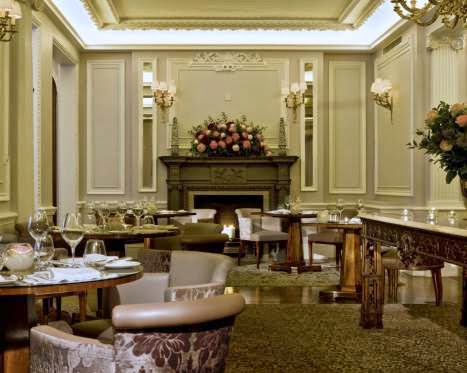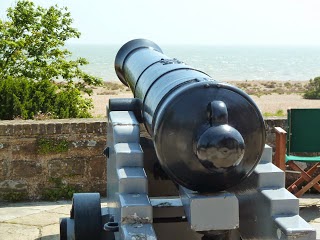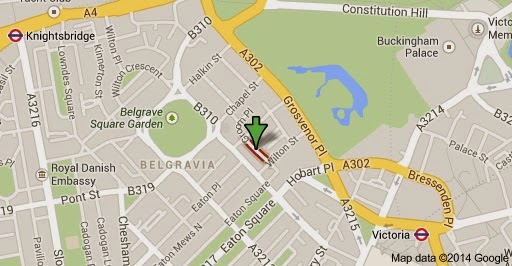THE GRENADIER PUB, LONDON
After our visit to Horse Guards, we’ll be rounding out the day with a private dinner at The Grenadier Pub, one of London’s historic pubs. This is another stop I try to make whenever I’m in London and I’ve been there with, among others, Victoria, my daughter, Brooke, with authors Diane Gaston, Sue Ellen Welfonder, and Carrie Bebris and even by myself.
The Grenadier is a tad hard to find first time out, tucked away as it is behind Wilton Crescent on Wilton Row, or Wilton Mews, in Belgravia. You can see how it’s situated on the street at right in the photo of the Row below.
Here’s the Row on a map of London.
It’s within walking distance of Apsley House and legend has it that the Pub was used as a mess by soldiers in the Duke of Wellington’s regiment, although a pub in some form has stood on the spot since 1720.
Supposedly, there’s a blocked up entrance to a tunnel in the basement of the Pub that connects it to Apsley House. Keeping in mind that Wellington rarely fraternized with his soldiers – apart from his ADC’s and a very few fellow officers – and that Wellington regularly traveled round London on horseback, in full view of all and sundry and wasn’t the least concerned about hiding his movements – I put the story of the tunnel on the side of legend, rather than fact.
The Grenadier’s military connection is not in doubt. Until 1834, Old Barrack Yard, the remnants of which run along the side of the Grenadier Pub, once formed the access road to Knightsbridge Foot Barracks, located on the site now occupied by St. Paul’s Church, Wilton Place. When the Guards moved to their current home at Wellington Barracks in Birdcage Walk, the land was donated by the owner, the Duke of Westminster, to the Diocese of London.
Today, the Grenadier is awash in historic military decor and Napoleonic atmosphere, with much of the memorabilia focused upon Guards history.
In addition, the Wellington connection is reinforced at the Grenadier through portraits of the Duke, like the one below over the fireplace, as well as the story that the mounting block outside the side entrance of the Pub (below, left) was placed there for Wellington’s use. Which begs the question – did he use the block in order to mount his horse before riding it down the basement stairs and then home through the tunnel?
Bringing the history of the Grenadier closer to the present, legend also has it that The Grenadier was a regular haunt for Burt Bacharach in the 60’s and that he wrote the score for What’s New Pussycat when he stayed across the road in 10 Wilton Row. Madonna and Prince William are reputed to frequent the Pub, which is said to serve the best “secret recipe” Bloody Mary’s in London.
You’ll agree that The Grenadier was a “must do” for the Duke of Wellington Tour and Victoria and I look forward to the private dinner our tour group is slated to enjoy here. Not to mention the cocktails . . . . .
. . . . . . . And the ghost. The Grenadier is commonly known as one of the most haunted places in London, so I could hardly keep it a secret. The Pub is sup
posedly haunted by the ghost of a soldier who was beaten to death for cheating at cards in the Pub. If you’re interested in learning more about the haunted history of the Pub, here’s a video about it from the television series
Great British Ghosts, which also happens to have some great footage of the interior of the Pub, its decor and atmosphere. Not mention the cellars.
Personally, I’ve never seen a ghost inside the Grenadier. Rather, I saw them (yes, plural) around the corner in Old Barrack Yard, above. You can read all about my
ghostly encounter in a prior post here.
Oh, one more thing . . . . . . . I should mention that ghost sightings are most frequent in the month of September.
COMPLETE ITINERARY AND DETAILS FOR
THE DUKE OF WELLINGTON TOUR IN SEPTEMBER 2014
Why not join us??


,_wife_of_William,_3rd_Baron_Lyttelton_by_John_Jackson_(1778-1831)_cropped.jpg)













